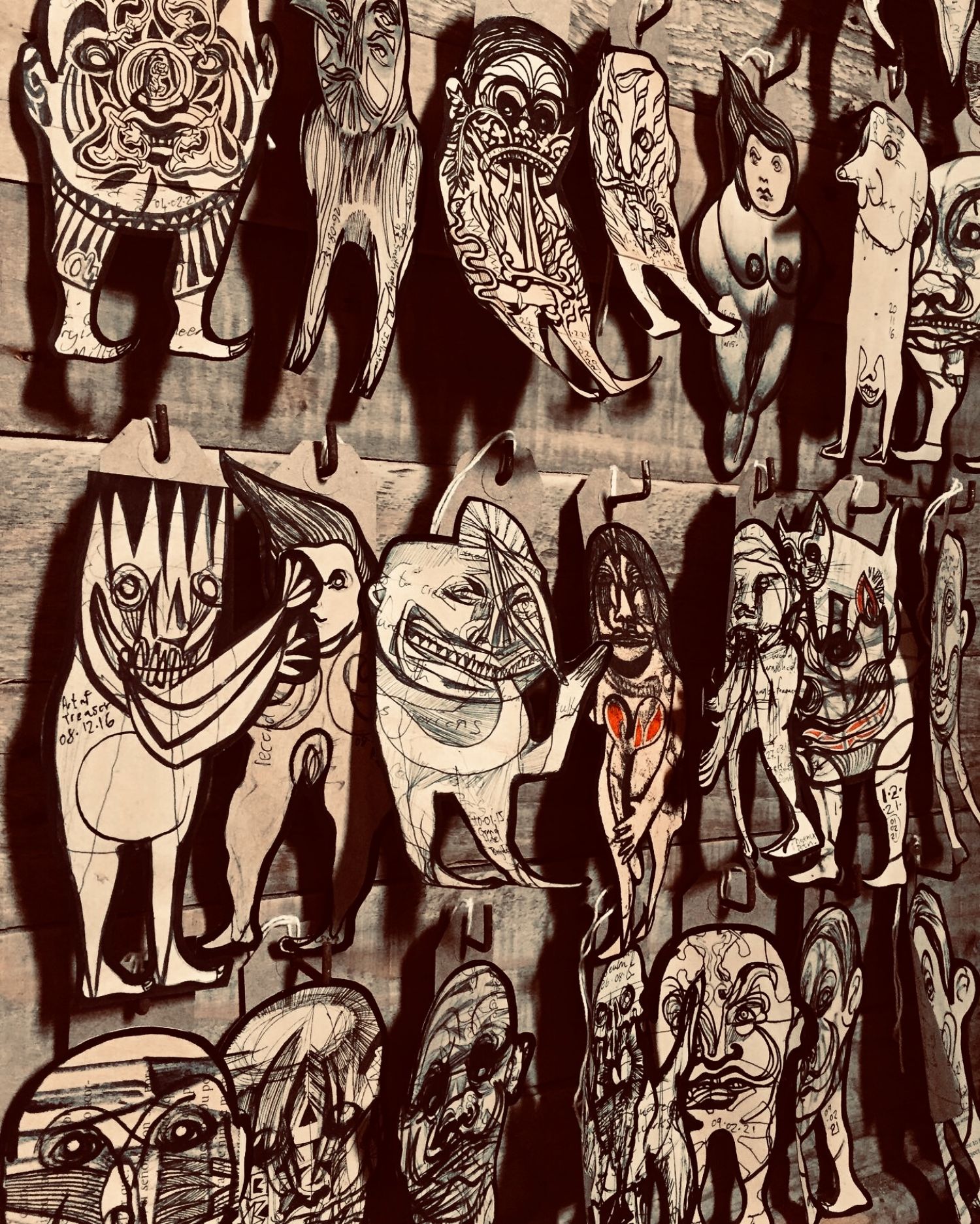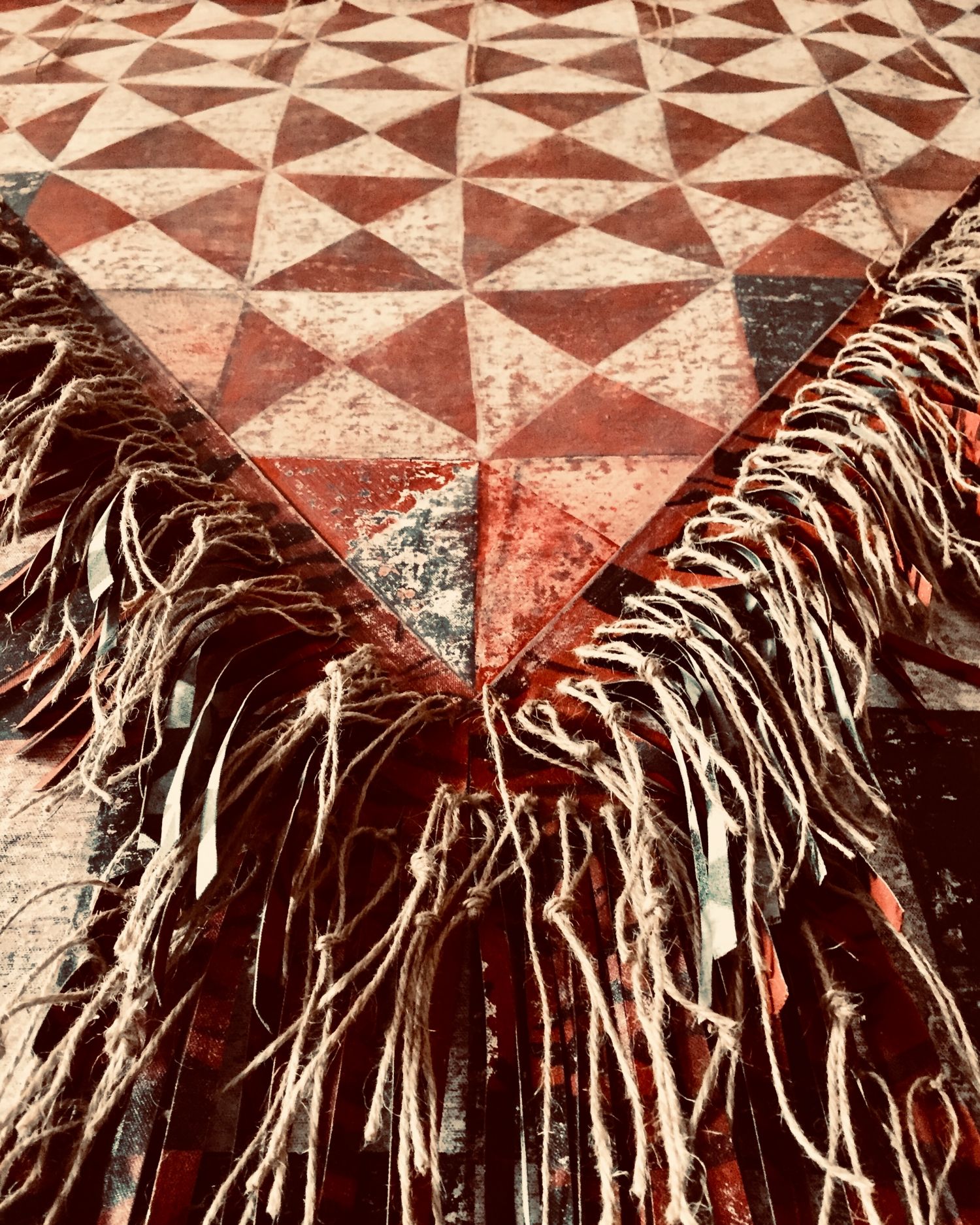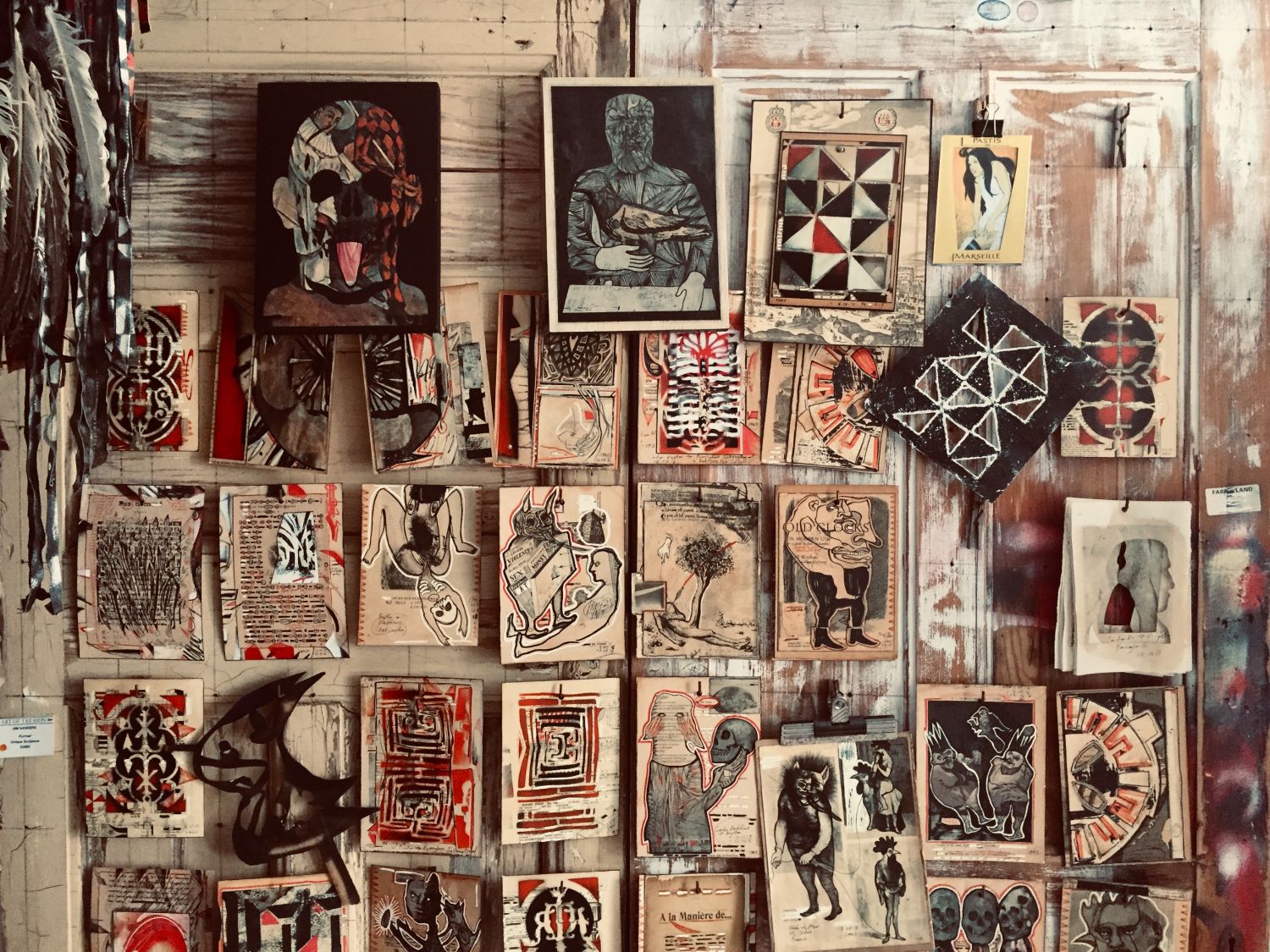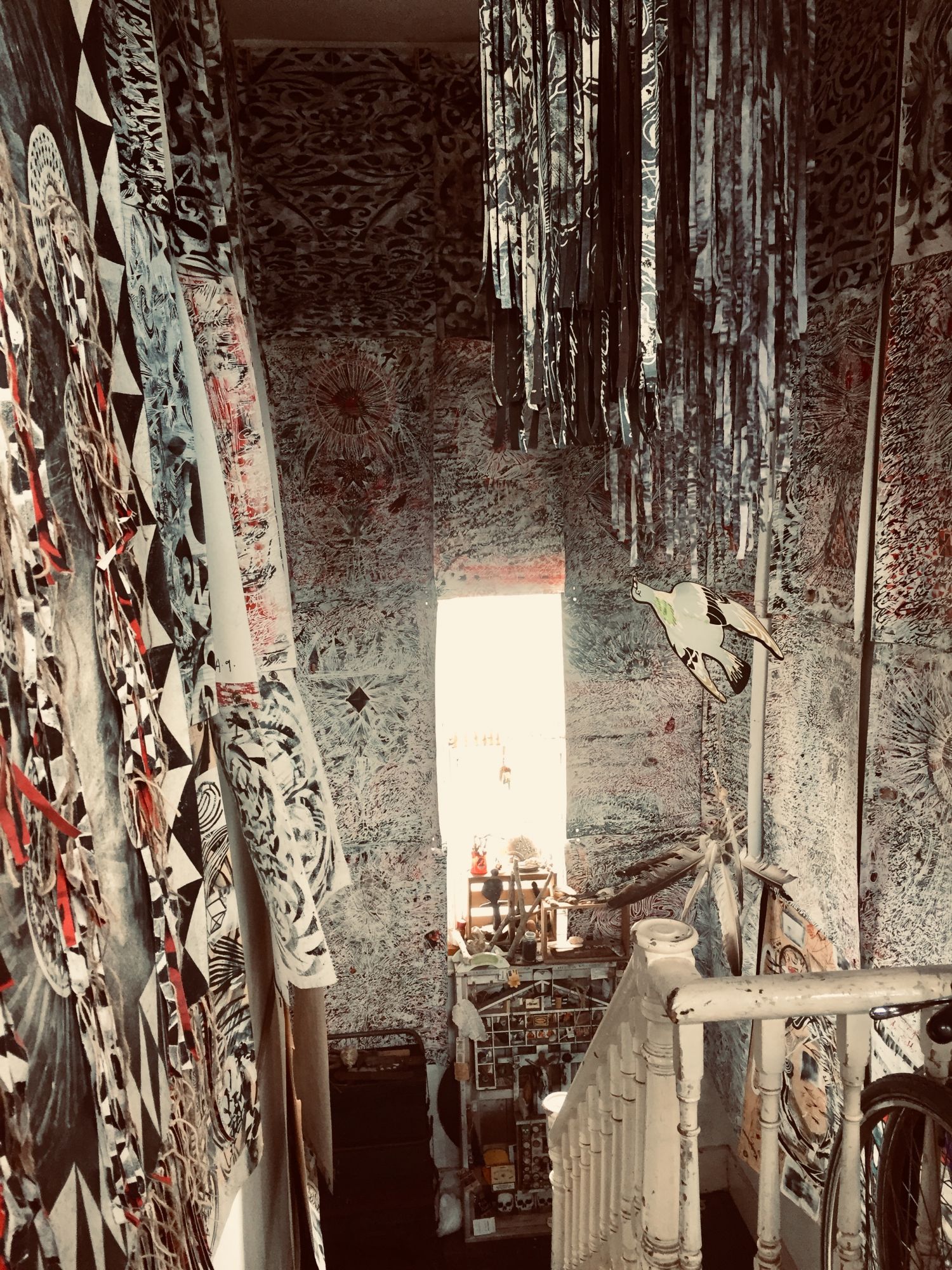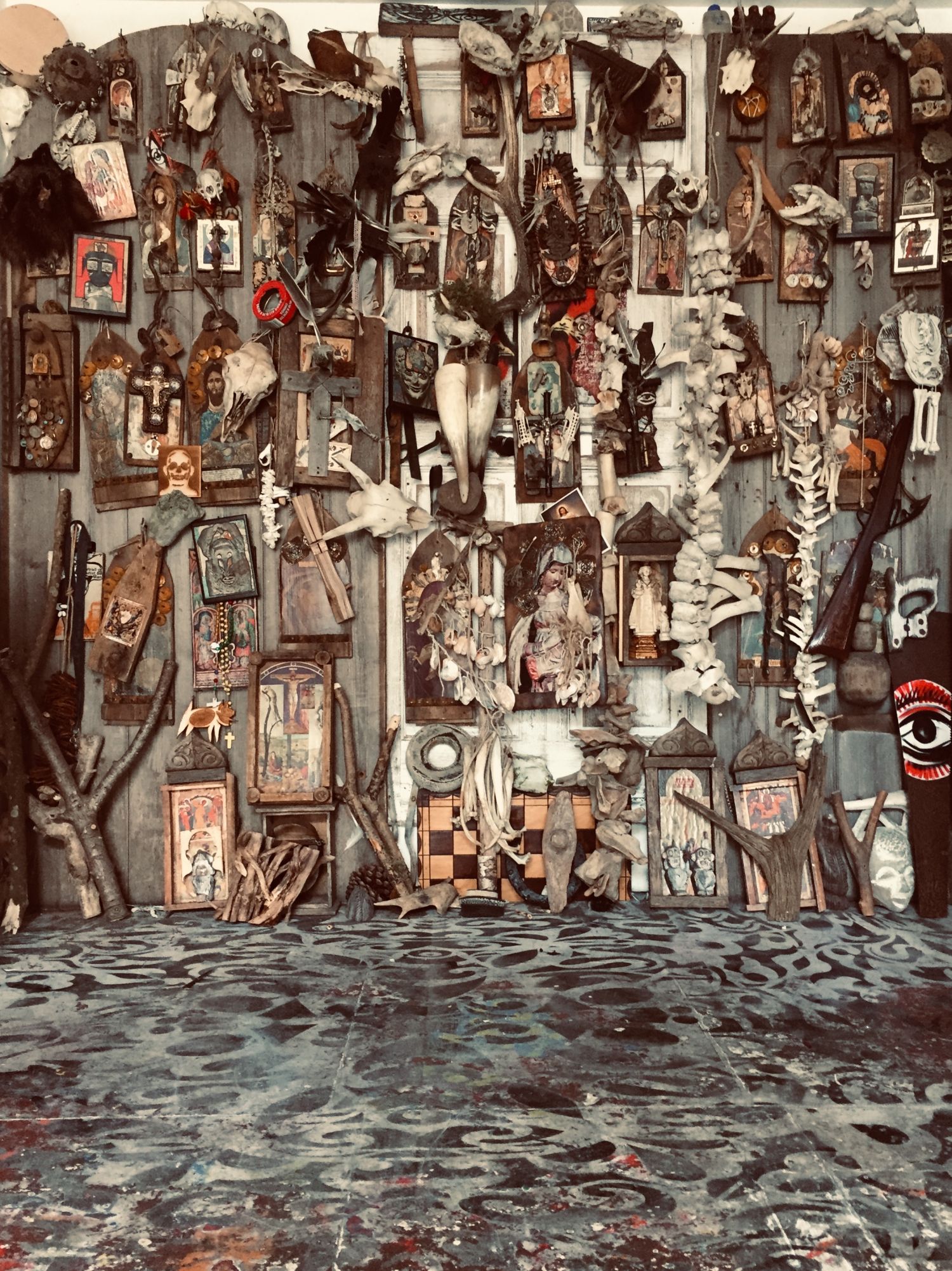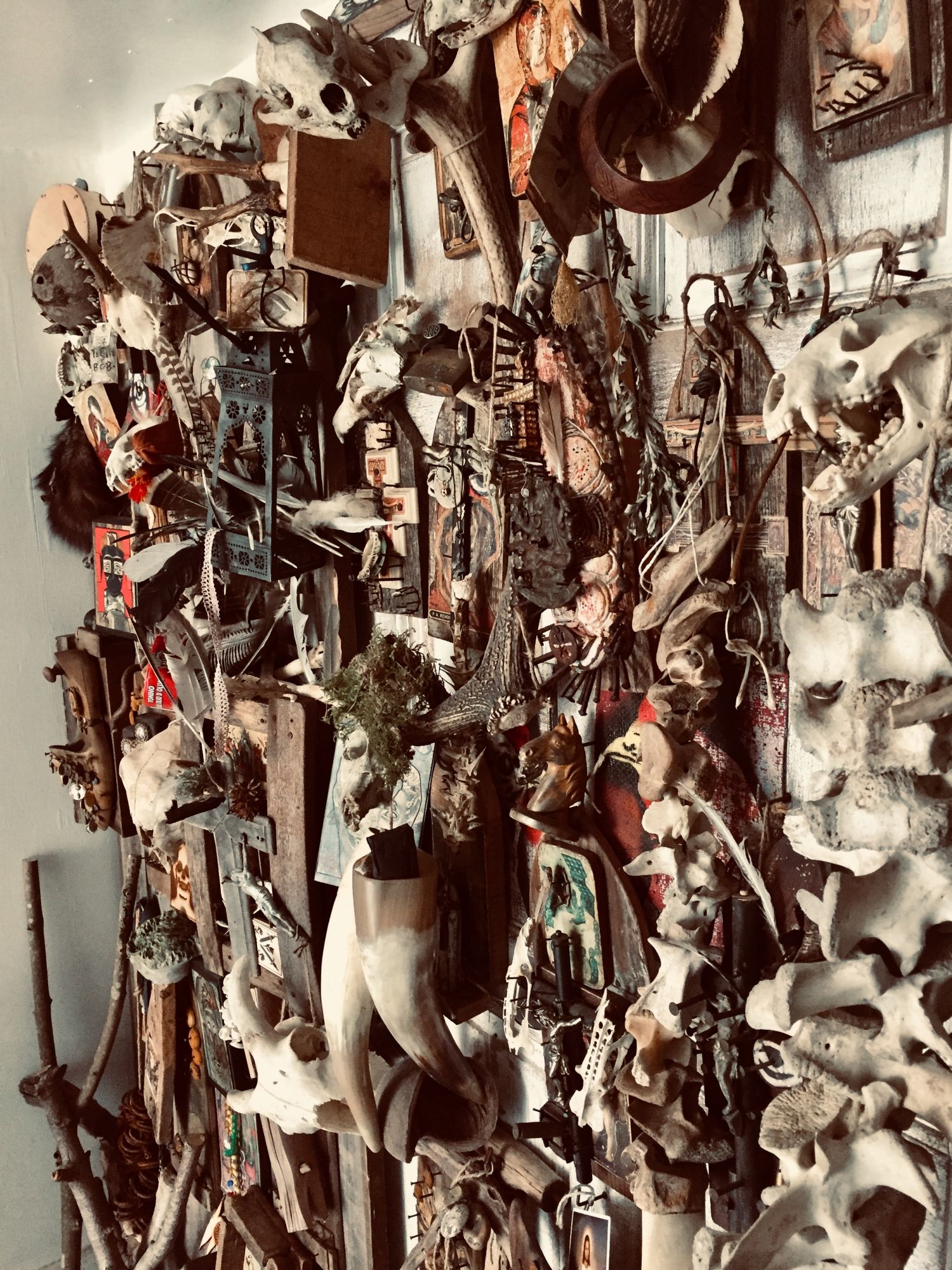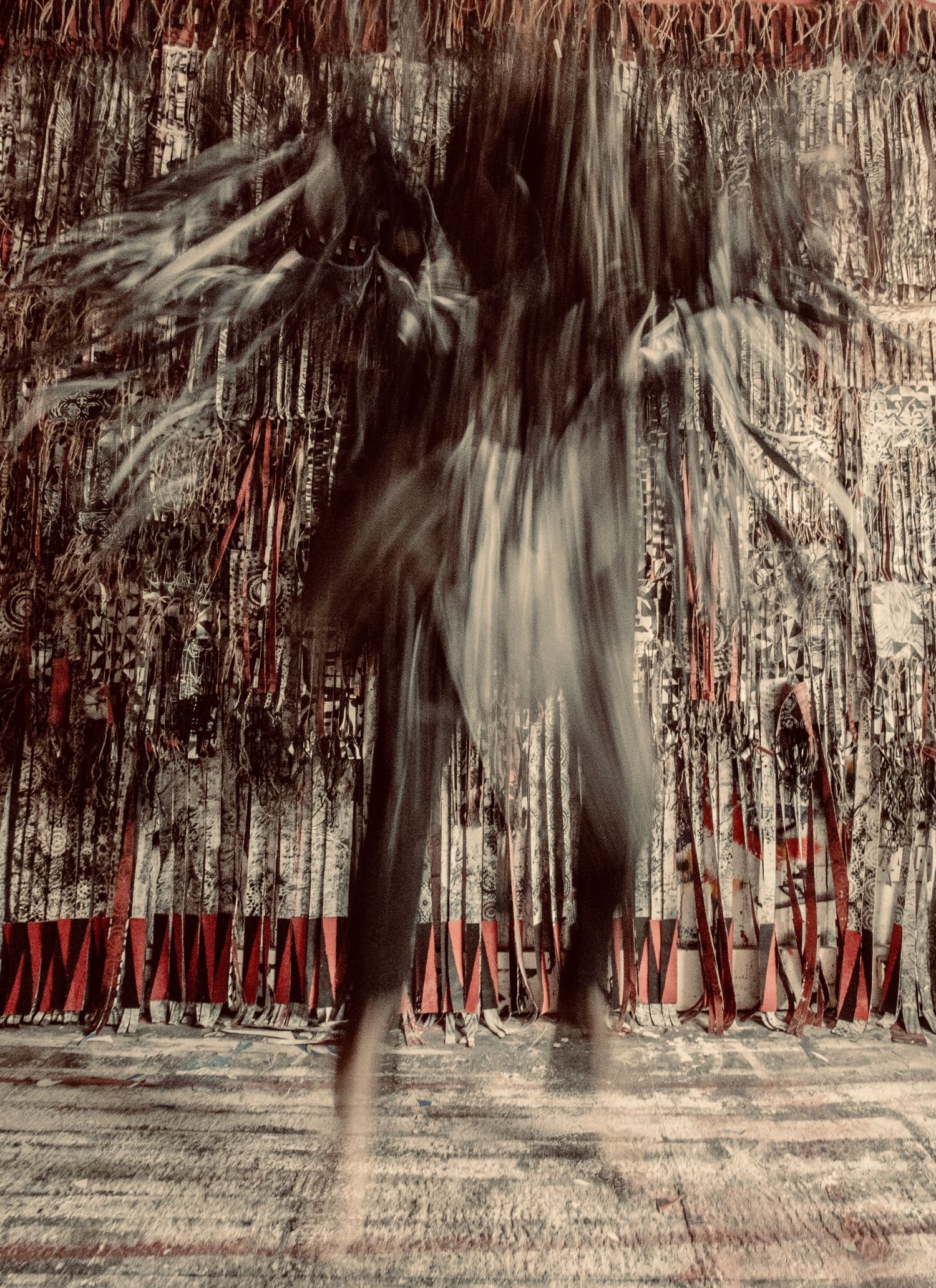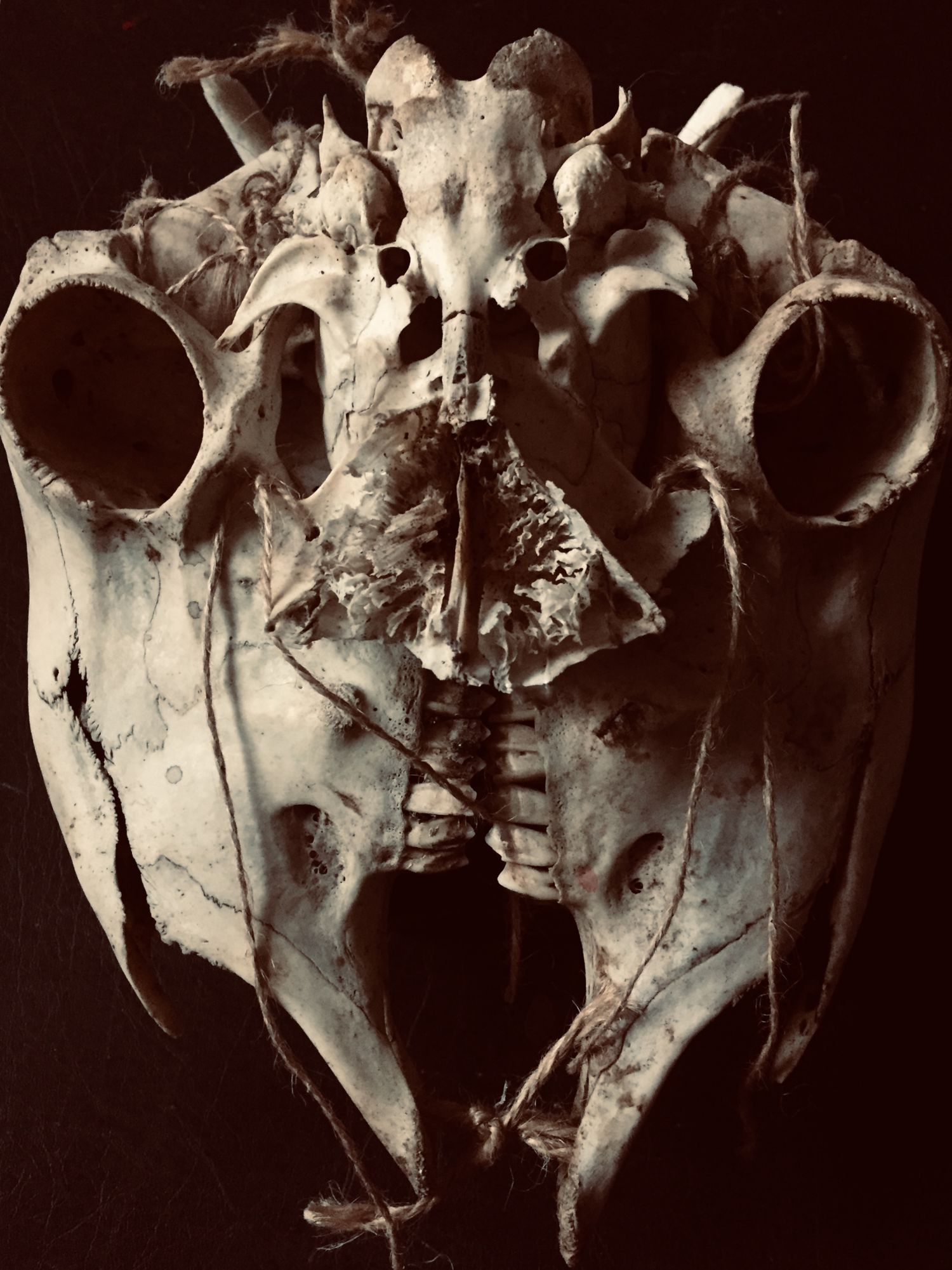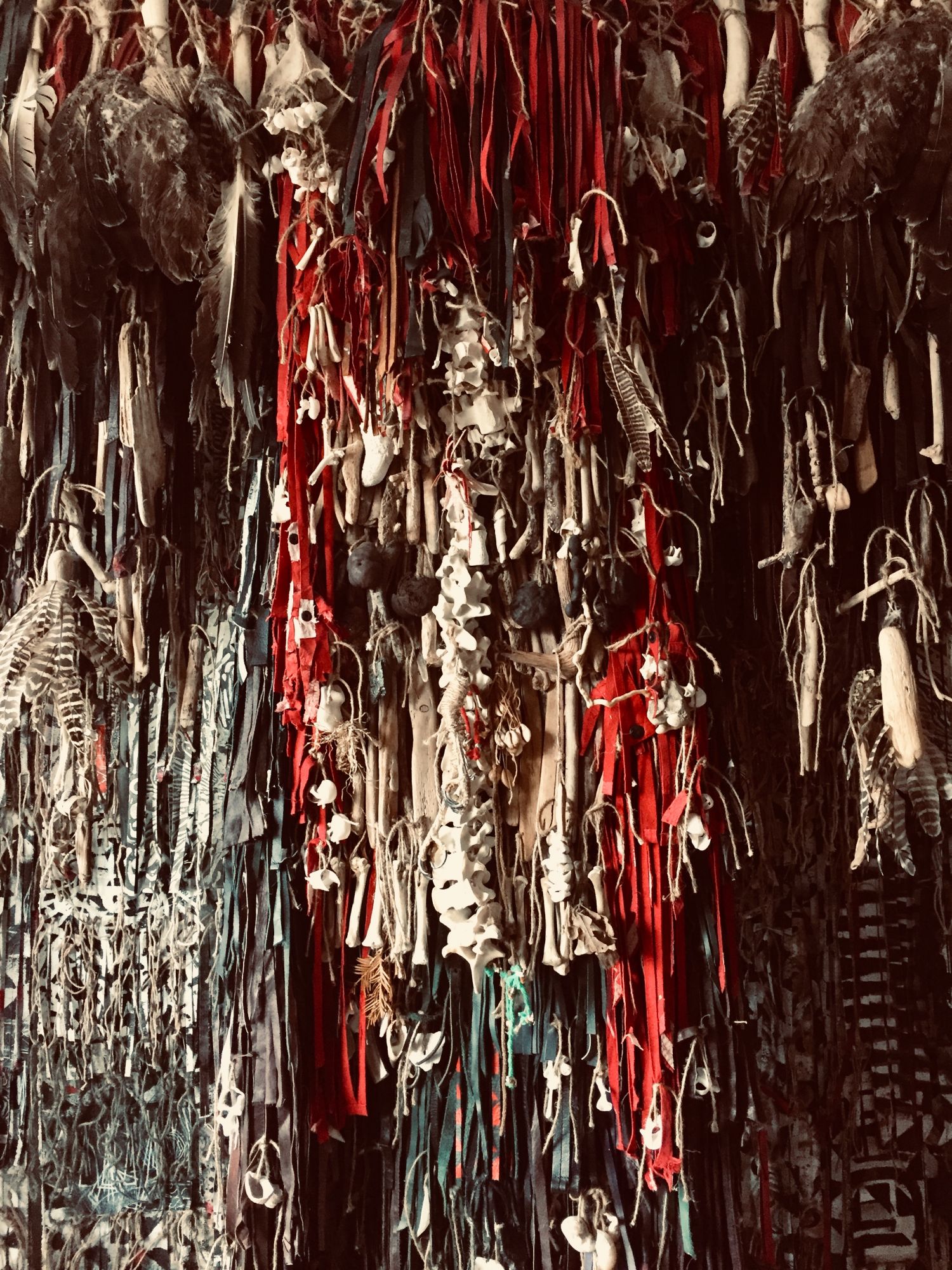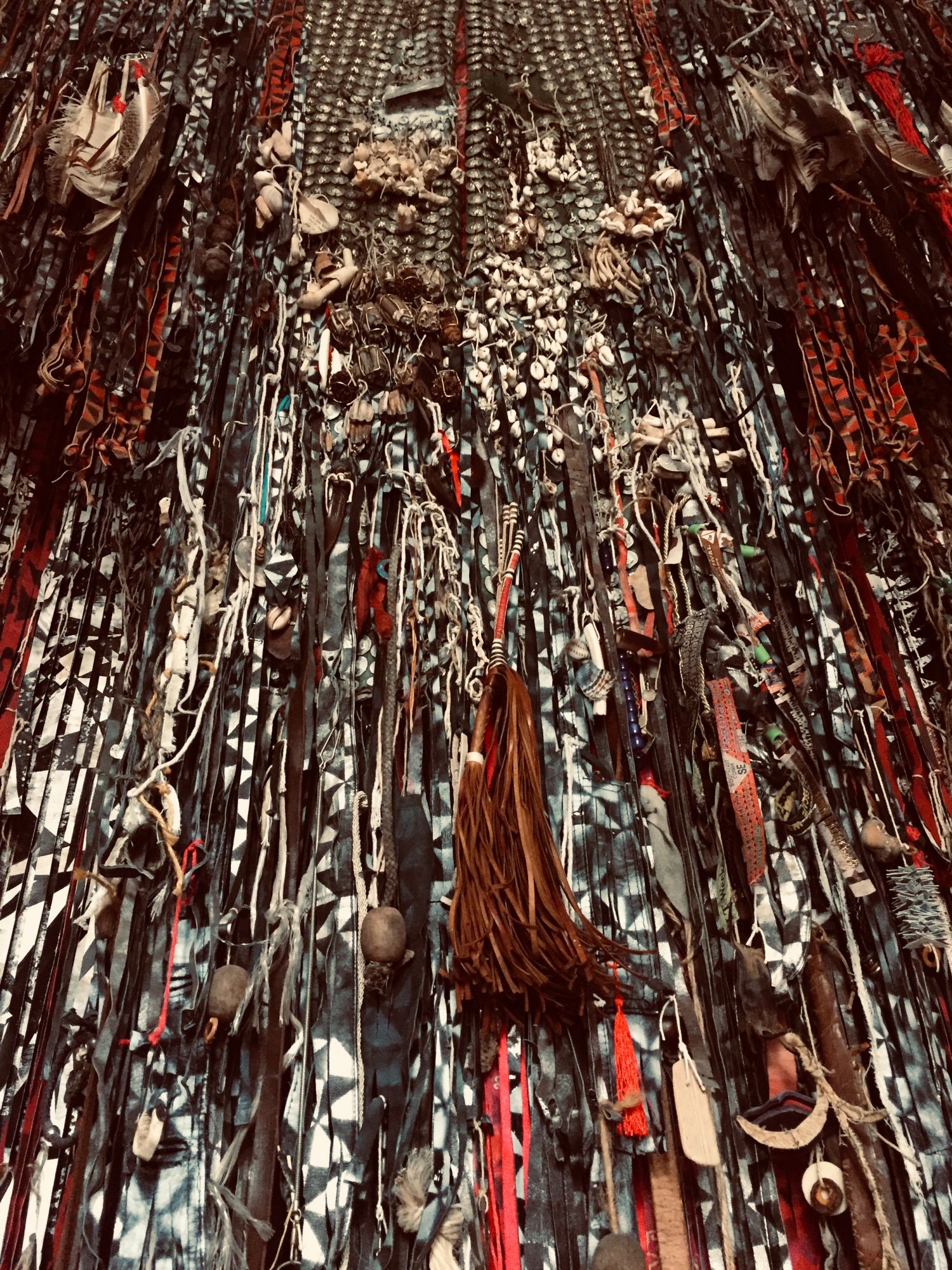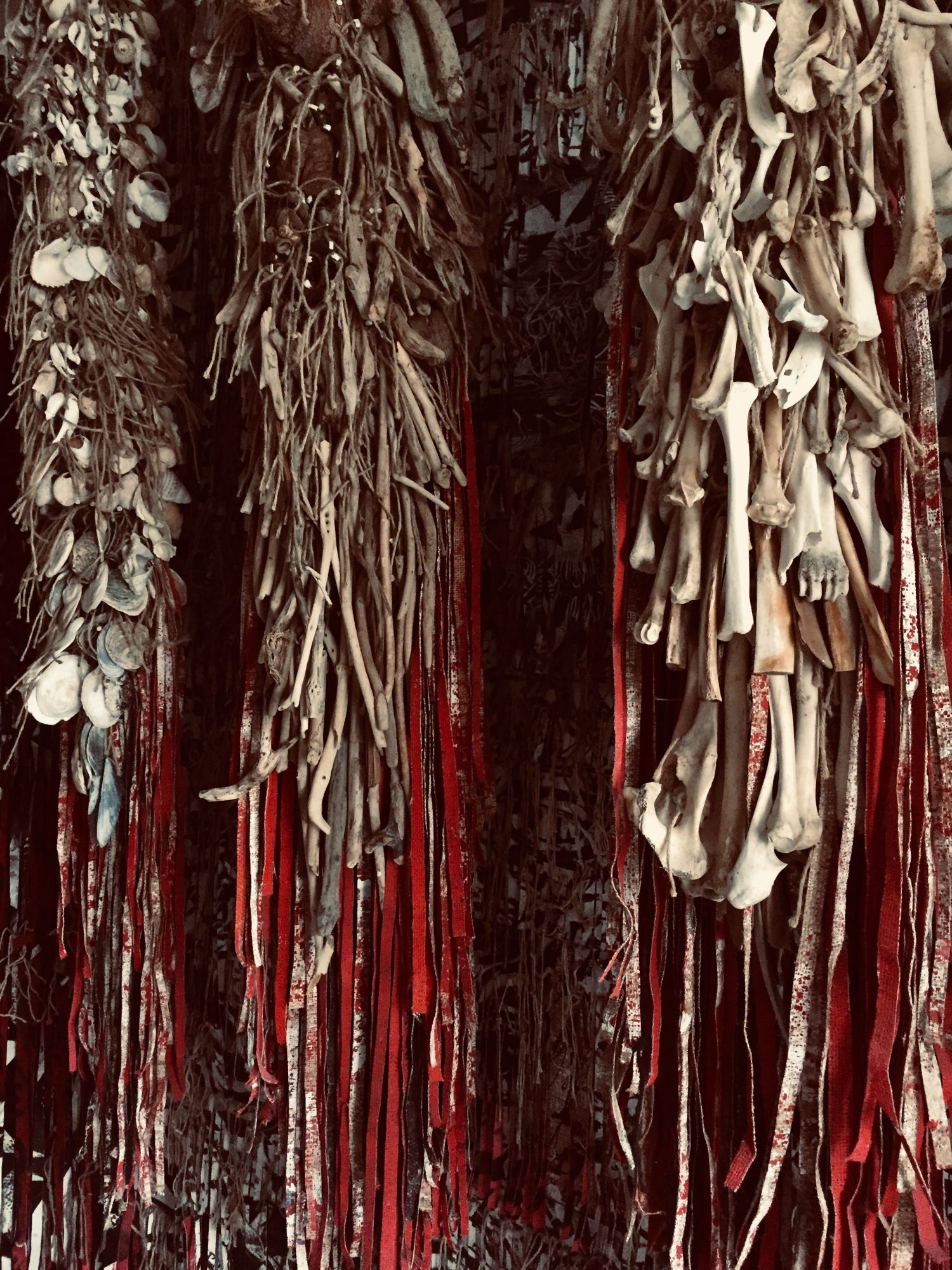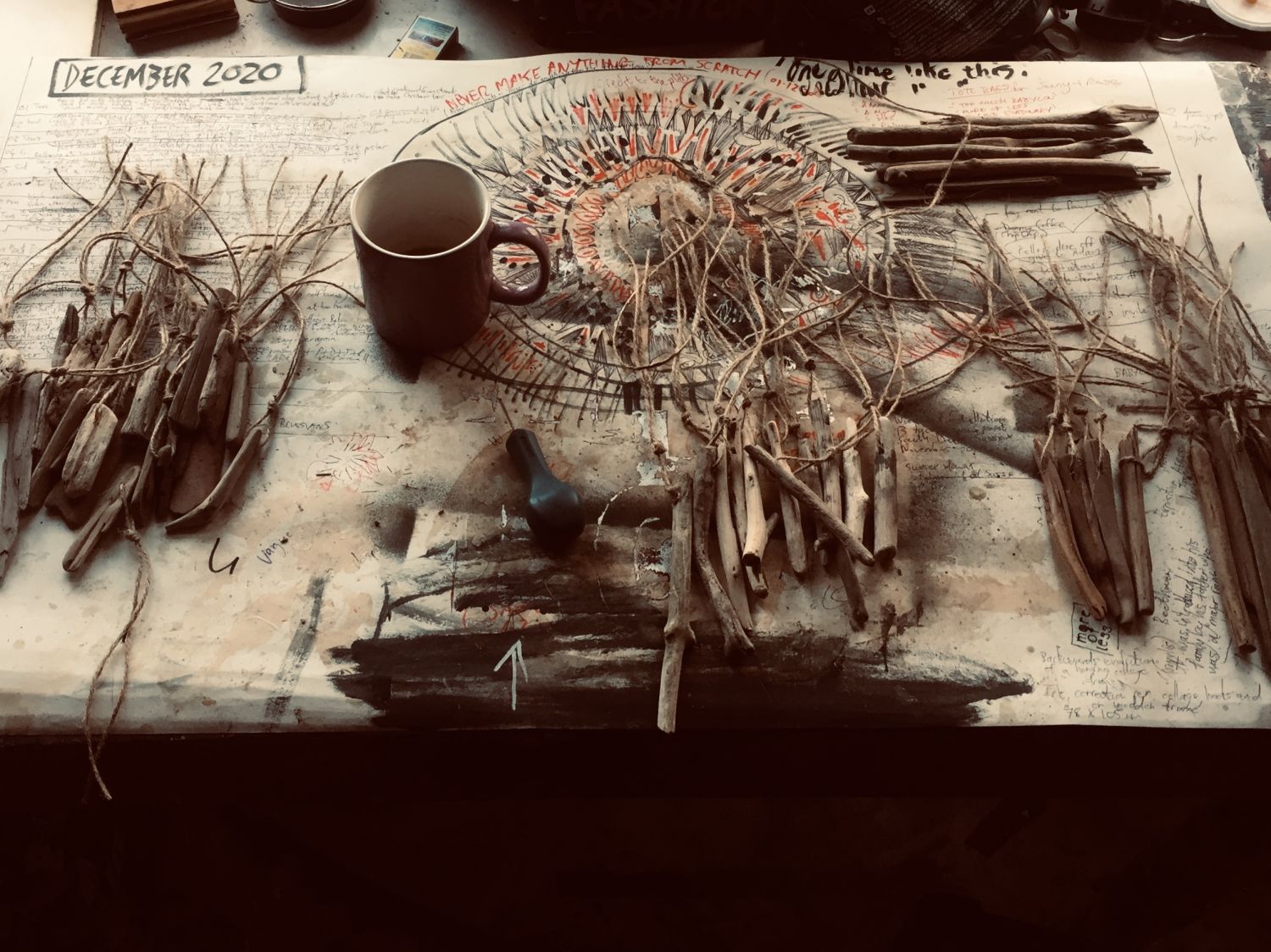How to slowly disappear inside a painting
Jim Sanders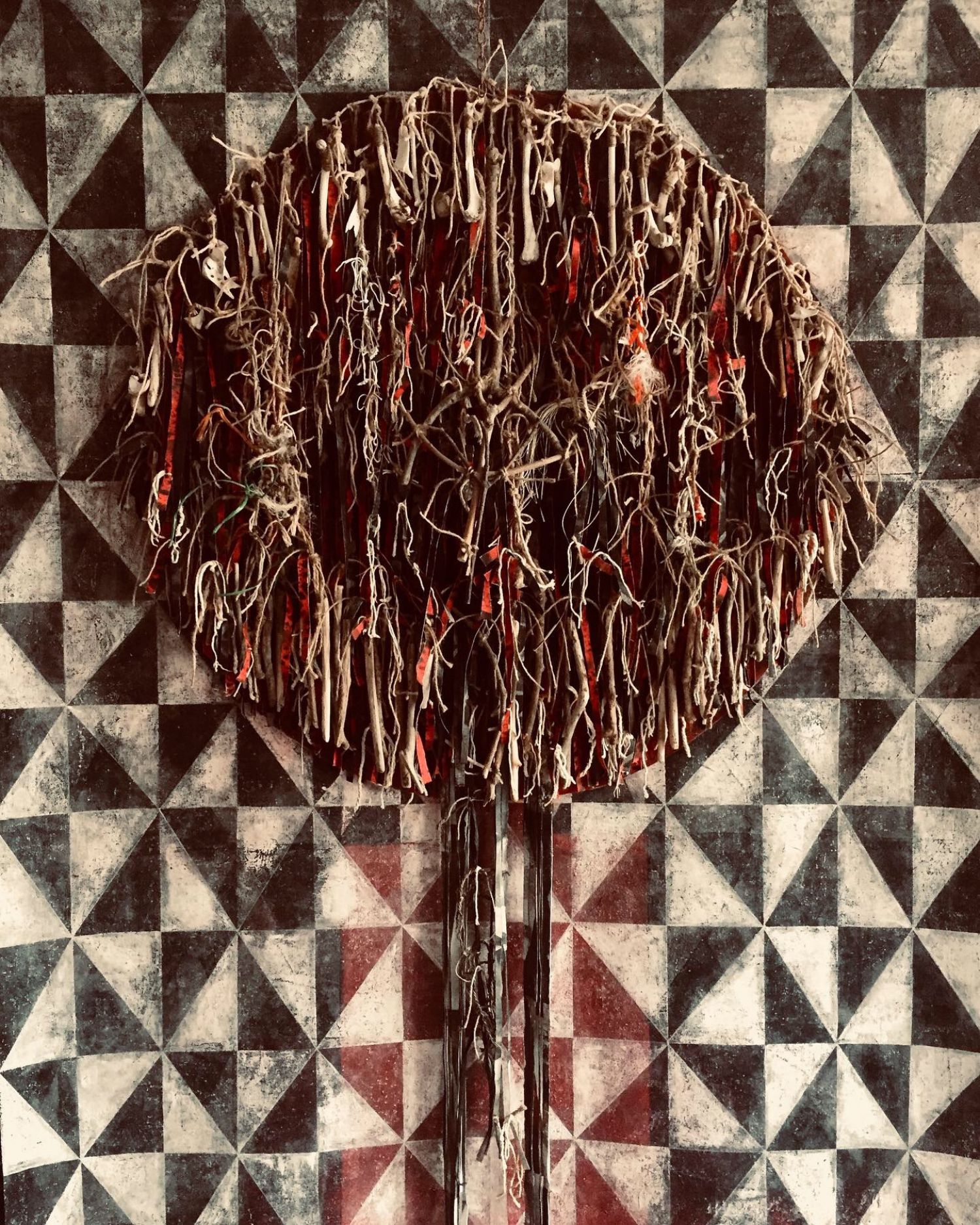
This text does not serve to present the work of Jim Sanders. Nor will it serve as an attempt to frame his work in the contemporary artistic context, underlining its importance, depth, coherence and its own pulsation, within a circuit that some have defined as outsider art. The photos that follow this text (captured by the artist himself), documentation of a small fraction of his work, will not completely elucidate the viewer regarding the work of Jim Sanders, characterized by a movement of permanent reconstruction, multiplication, recovery, densification, in a process of continuity with themes and obsessions about desire and death, the sacred and the profane. Able to act with updating and permanent freedom, Sanders makes his works have a timeless quality and therefore, not infrequently, uncapturable.
Jim Sanders incessantly searches through sculpture, assemblage, painting, drawing, performance, installation and in the palimpsest made possible by himself at the intersection of all forms, searches as if a child and an elderly inhabit him – at the same time in the same body. His works appear divorced from the schematics, presumptions and predictability that characterize much of the simulacra, performances and productions of the contemporary art. Jim Sanders is a rare, continuous, uncategorizable.
I saw for the first time a painting of his sculpture in the house of a mutual friend – the Galician writer Xelís de Toro. A painting that made the light tremble, in the living room of that basement. After that first encounter, I remember walking through a set of totemic sculptures, part of an exhibition in a gallery in Brighton, and starting to identify other works that were being disseminated in the form of paintings, murals or installations, in some places in the same city. The works of Jim Sanders proved to be intercommunicating, although distant, independent collaborated with each other in a silent manner.
One night we went to Jim's house. At the time, he was painting humanoid figures, some of them metamorphosed into birds, with acrylic on canvas, in large format. This production occupied the entire walls and floor of two rooms, with some fresh paintings always hanging in the foreground, hanging like heavy flags. The figures always appeared in each other's company, waiting for the next figure to be produced, in a magical and celebratory exercise. At the time, its wooden sculptures that crossed giant dogs with procession stages and its small altars of found objects occupied a large part of the surfaces of the bathroom and the kitchen. There was a record player and the low light in some parts of the house made the religious like figures of the works to dance. There we could have access to an extended reality, in various scales of Jim's work. Each step and corner of the house was (and it is) the archive, the warehouse, the atelier, the work in constant process.
I also remember a show where the audience entered the space of the play, walking through a giant canvas screen with a figure painted by Jim.
Maybe ten years have passed and, since then, Jim Sanders has himself increasingly entered his canvas, through his own original syncretism, driven by ecology and the cosmic, starting to repaint, re-sculpt, defragment, to make disappear in the work the things that are only accessory, giving more and more space to the communicative poetics that he built, through time. Not long ago, many of his acrylic canvases were ripped and transformed into costumes that remind us of pastoral or shamanic clothing and that objectively concentrate many works and voices inside. And we saw Jim Sanders approaching the house as the forest. Disappearing in the studio as in the work. Going through the frame. Disappearing. Returning to the forest and collecting the materials for the work that he inhabits.
Bruno Humberto
